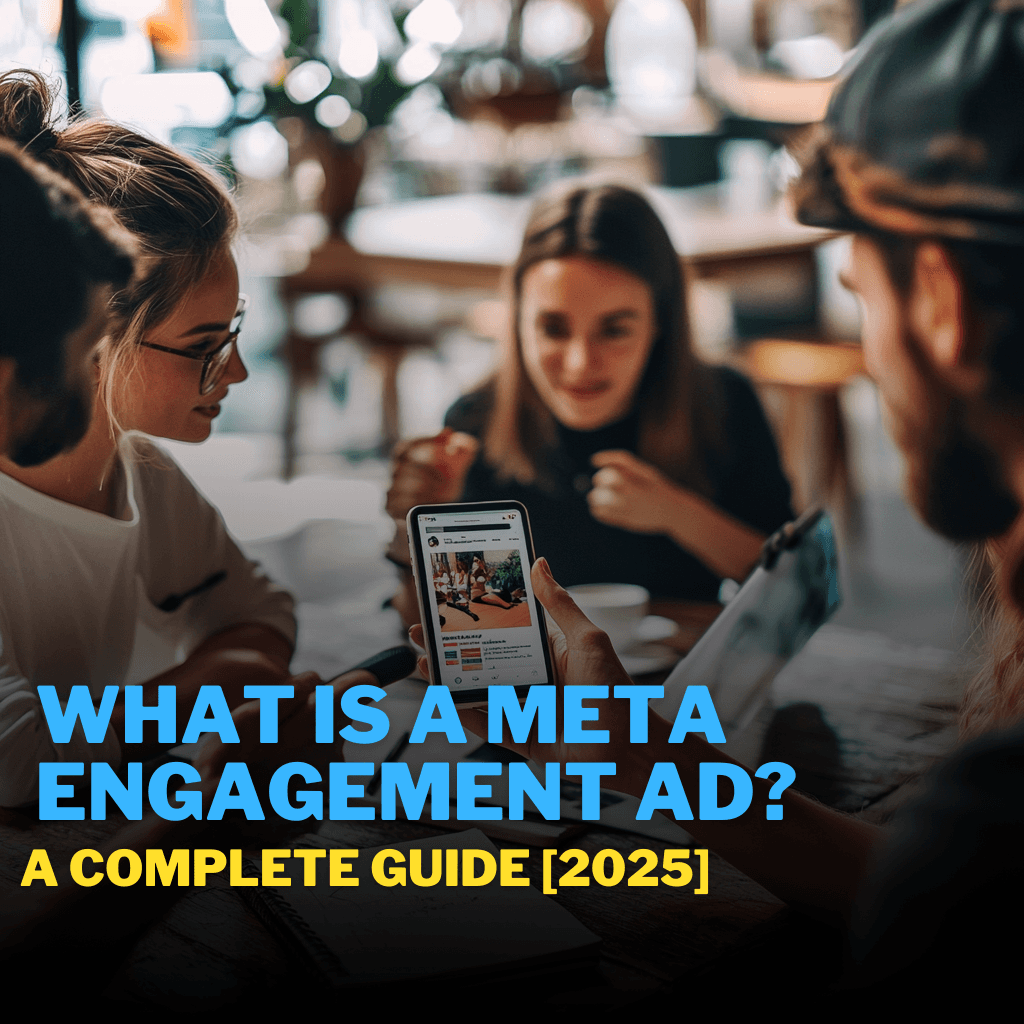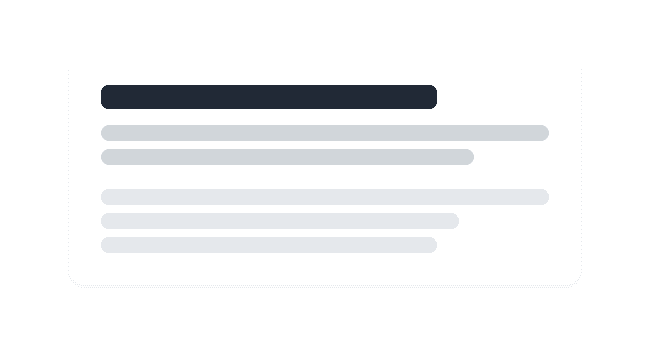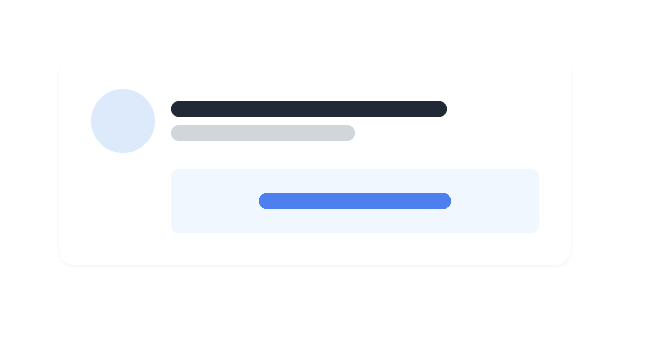What is a Meta Engagement Ad? A Complete Guide [2025]
What is a Meta Engagement Ad? A Complete Guide [2025]
What is a Meta Engagement Ad? A Complete Guide [2025]
Founder of Arrow AI, helping SMB founders in Tech streamline their content creation with AI-powered automation and expert guidance.
Feb 13, 2025



What is a meta engagement ad? It's Facebook's advertising tool that puts your posts in front of active users. Unlike regular ads that focus on sales or website clicks, these ads aim for social interactions. They cost less than conversion-focused ads and help build active discussions around your brand.
When done right, these ads can multiply your post's reach through organic sharing and sustained engagement. But many businesses waste money by misunderstanding how they work.
This guide covers the essentials of creating effective engagement ads and measuring their actual impact on your social media results.
Key Takeaways
Meta engagement ads find and target users likely to interact, unlike boosted posts that only increase views
Comments and shares carry more value than likes for expanding organic reach
Best used for audiences familiar with your brand but not yet customers
Target based on user behavior and interests for better interaction rates
Track engagement types that match your specific goals - views, comments, or shares
Understanding Meta Engagement Ads
What Does "Engagement" Mean on Facebook?
Facebook counts engagement as any action someone takes on your post. A like is basic engagement. A share means someone values your content enough to pass it to friends. Comments create back-and-forth discussions. Each reaction type, from a simple thumbs up to a heart, tells you how people feel about your content.
Meta Engagement Ads vs. Regular Posts
Regular posts reach only a small part of your audience. Boosted posts get more views but don't target engaged users. Meta engagement ads find people who match your active followers - those who comment often and share posts they like. You can target based on interests, past actions, and similar audiences to your current engaged followers.
Different Ad Objectives Explained
Meta splits ads into three groups: Awareness, Consideration, and Conversion. Engagement ads fall under Consideration. They work best for people who might recognize your brand but haven't bought anything yet. For example, a yoga studio might target people who read fitness blogs or follow wellness accounts on Facebook.
Measuring Engagement: Understanding Success
Calculating Engagement Rate
Understanding engagement rates helps you measure campaign success. Calculate engagement per follower by dividing total interactions by your follower count. For reach-based rates, divide interactions by the number of unique users who saw your content. Impression-based rates consider how many times your content appeared in feeds. A good engagement rate typically ranges from 1% to 5%, depending on your industry and audience size.
Choosing Your Success Metric
Select metrics based on your campaign goals. Follower-based rates work well for measuring community growth and content resonance. Reach-based metrics help evaluate content appeal to new audiences. Impression-based measurements show how effectively your ads grab attention in crowded feeds. Track these metrics over time to spot trends and improvements in your campaign performance.
Using Data to Improve
Analyze high-performing posts to identify winning patterns. Look at posting times - you might find morning posts outperform evening content. Study content themes that generate discussion. Perhaps how-to posts spark more comments than promotional content. Review engagement patterns across different days of the week. Many B2B companies see higher engagement during weekdays, while B2C brands might excel on weekends.
Creating High-Engagement Meta Ads
Visual Content Optimization

Strong visuals cut through feed clutter. Use high-resolution images at 1080 x 1080 pixels for square posts, and vertical videos with a 4:5 ratio. Keep text overlays minimal - Facebook's 20% text rule might be gone, but clean visuals still perform better. Test bright, eye-catching images against subtle, professional ones to find what your audience prefers.
Message Structure

Craft your message with precision and impact. Front-load your key information in the first two lines - that's what users see before clicking "See More." Write clear headlines that state your main point or offer. Keep sentences short and paragraphs brief. This improves readability on mobile devices, where most users view your content.
Call-to-Action Strategy

Drive specific interactions with clear prompts. Instead of saying "What do you think?" try specific questions like "Which feature would you try first?" or "What's your biggest challenge with this?" Respond to comments within the first hour to boost visibility and encourage more interaction. Create posts that make sharing valuable to your audience - perhaps by helping them look knowledgeable to their network.
Integrating With Marketing Strategy
Meta engagement ads support your broader marketing efforts. Use them to test new messaging before bigger campaigns. Build social proof through visible interactions. Maintain active communication with your audience between product updates or launches. Gather valuable feedback through comments and responses.
Monitor performance data consistently. Track which types of posts generate meaningful discussions versus simple likes. Use this information to refine future content and targeting. Remember that high-quality engagement often matters more than large numbers of superficial interactions.
Conclusion
Meta engagement ads offer a direct way to connect with your target audience and increase valuable interactions. Focus on creating content that sparks genuine interest and conversation. Pay attention to your metrics, but don't let numbers override the quality of interactions. Test different approaches to find what resonates with your specific audience. Start with small tests, measure results, and scale up successful tactics.
Apply these methods to your next campaign and adjust based on your audience's response. Remember: effective engagement builds lasting connections that support your business goals.
What is a meta engagement ad? It's Facebook's advertising tool that puts your posts in front of active users. Unlike regular ads that focus on sales or website clicks, these ads aim for social interactions. They cost less than conversion-focused ads and help build active discussions around your brand.
When done right, these ads can multiply your post's reach through organic sharing and sustained engagement. But many businesses waste money by misunderstanding how they work.
This guide covers the essentials of creating effective engagement ads and measuring their actual impact on your social media results.
Key Takeaways
Meta engagement ads find and target users likely to interact, unlike boosted posts that only increase views
Comments and shares carry more value than likes for expanding organic reach
Best used for audiences familiar with your brand but not yet customers
Target based on user behavior and interests for better interaction rates
Track engagement types that match your specific goals - views, comments, or shares
Understanding Meta Engagement Ads
What Does "Engagement" Mean on Facebook?
Facebook counts engagement as any action someone takes on your post. A like is basic engagement. A share means someone values your content enough to pass it to friends. Comments create back-and-forth discussions. Each reaction type, from a simple thumbs up to a heart, tells you how people feel about your content.
Meta Engagement Ads vs. Regular Posts
Regular posts reach only a small part of your audience. Boosted posts get more views but don't target engaged users. Meta engagement ads find people who match your active followers - those who comment often and share posts they like. You can target based on interests, past actions, and similar audiences to your current engaged followers.
Different Ad Objectives Explained
Meta splits ads into three groups: Awareness, Consideration, and Conversion. Engagement ads fall under Consideration. They work best for people who might recognize your brand but haven't bought anything yet. For example, a yoga studio might target people who read fitness blogs or follow wellness accounts on Facebook.
Measuring Engagement: Understanding Success
Calculating Engagement Rate
Understanding engagement rates helps you measure campaign success. Calculate engagement per follower by dividing total interactions by your follower count. For reach-based rates, divide interactions by the number of unique users who saw your content. Impression-based rates consider how many times your content appeared in feeds. A good engagement rate typically ranges from 1% to 5%, depending on your industry and audience size.
Choosing Your Success Metric
Select metrics based on your campaign goals. Follower-based rates work well for measuring community growth and content resonance. Reach-based metrics help evaluate content appeal to new audiences. Impression-based measurements show how effectively your ads grab attention in crowded feeds. Track these metrics over time to spot trends and improvements in your campaign performance.
Using Data to Improve
Analyze high-performing posts to identify winning patterns. Look at posting times - you might find morning posts outperform evening content. Study content themes that generate discussion. Perhaps how-to posts spark more comments than promotional content. Review engagement patterns across different days of the week. Many B2B companies see higher engagement during weekdays, while B2C brands might excel on weekends.
Creating High-Engagement Meta Ads
Visual Content Optimization

Strong visuals cut through feed clutter. Use high-resolution images at 1080 x 1080 pixels for square posts, and vertical videos with a 4:5 ratio. Keep text overlays minimal - Facebook's 20% text rule might be gone, but clean visuals still perform better. Test bright, eye-catching images against subtle, professional ones to find what your audience prefers.
Message Structure

Craft your message with precision and impact. Front-load your key information in the first two lines - that's what users see before clicking "See More." Write clear headlines that state your main point or offer. Keep sentences short and paragraphs brief. This improves readability on mobile devices, where most users view your content.
Call-to-Action Strategy

Drive specific interactions with clear prompts. Instead of saying "What do you think?" try specific questions like "Which feature would you try first?" or "What's your biggest challenge with this?" Respond to comments within the first hour to boost visibility and encourage more interaction. Create posts that make sharing valuable to your audience - perhaps by helping them look knowledgeable to their network.
Integrating With Marketing Strategy
Meta engagement ads support your broader marketing efforts. Use them to test new messaging before bigger campaigns. Build social proof through visible interactions. Maintain active communication with your audience between product updates or launches. Gather valuable feedback through comments and responses.
Monitor performance data consistently. Track which types of posts generate meaningful discussions versus simple likes. Use this information to refine future content and targeting. Remember that high-quality engagement often matters more than large numbers of superficial interactions.
Conclusion
Meta engagement ads offer a direct way to connect with your target audience and increase valuable interactions. Focus on creating content that sparks genuine interest and conversation. Pay attention to your metrics, but don't let numbers override the quality of interactions. Test different approaches to find what resonates with your specific audience. Start with small tests, measure results, and scale up successful tactics.
Apply these methods to your next campaign and adjust based on your audience's response. Remember: effective engagement builds lasting connections that support your business goals.
What is a meta engagement ad? It's Facebook's advertising tool that puts your posts in front of active users. Unlike regular ads that focus on sales or website clicks, these ads aim for social interactions. They cost less than conversion-focused ads and help build active discussions around your brand.
When done right, these ads can multiply your post's reach through organic sharing and sustained engagement. But many businesses waste money by misunderstanding how they work.
This guide covers the essentials of creating effective engagement ads and measuring their actual impact on your social media results.
Key Takeaways
Meta engagement ads find and target users likely to interact, unlike boosted posts that only increase views
Comments and shares carry more value than likes for expanding organic reach
Best used for audiences familiar with your brand but not yet customers
Target based on user behavior and interests for better interaction rates
Track engagement types that match your specific goals - views, comments, or shares
Understanding Meta Engagement Ads
What Does "Engagement" Mean on Facebook?
Facebook counts engagement as any action someone takes on your post. A like is basic engagement. A share means someone values your content enough to pass it to friends. Comments create back-and-forth discussions. Each reaction type, from a simple thumbs up to a heart, tells you how people feel about your content.
Meta Engagement Ads vs. Regular Posts
Regular posts reach only a small part of your audience. Boosted posts get more views but don't target engaged users. Meta engagement ads find people who match your active followers - those who comment often and share posts they like. You can target based on interests, past actions, and similar audiences to your current engaged followers.
Different Ad Objectives Explained
Meta splits ads into three groups: Awareness, Consideration, and Conversion. Engagement ads fall under Consideration. They work best for people who might recognize your brand but haven't bought anything yet. For example, a yoga studio might target people who read fitness blogs or follow wellness accounts on Facebook.
Measuring Engagement: Understanding Success
Calculating Engagement Rate
Understanding engagement rates helps you measure campaign success. Calculate engagement per follower by dividing total interactions by your follower count. For reach-based rates, divide interactions by the number of unique users who saw your content. Impression-based rates consider how many times your content appeared in feeds. A good engagement rate typically ranges from 1% to 5%, depending on your industry and audience size.
Choosing Your Success Metric
Select metrics based on your campaign goals. Follower-based rates work well for measuring community growth and content resonance. Reach-based metrics help evaluate content appeal to new audiences. Impression-based measurements show how effectively your ads grab attention in crowded feeds. Track these metrics over time to spot trends and improvements in your campaign performance.
Using Data to Improve
Analyze high-performing posts to identify winning patterns. Look at posting times - you might find morning posts outperform evening content. Study content themes that generate discussion. Perhaps how-to posts spark more comments than promotional content. Review engagement patterns across different days of the week. Many B2B companies see higher engagement during weekdays, while B2C brands might excel on weekends.
Creating High-Engagement Meta Ads
Visual Content Optimization

Strong visuals cut through feed clutter. Use high-resolution images at 1080 x 1080 pixels for square posts, and vertical videos with a 4:5 ratio. Keep text overlays minimal - Facebook's 20% text rule might be gone, but clean visuals still perform better. Test bright, eye-catching images against subtle, professional ones to find what your audience prefers.
Message Structure

Craft your message with precision and impact. Front-load your key information in the first two lines - that's what users see before clicking "See More." Write clear headlines that state your main point or offer. Keep sentences short and paragraphs brief. This improves readability on mobile devices, where most users view your content.
Call-to-Action Strategy

Drive specific interactions with clear prompts. Instead of saying "What do you think?" try specific questions like "Which feature would you try first?" or "What's your biggest challenge with this?" Respond to comments within the first hour to boost visibility and encourage more interaction. Create posts that make sharing valuable to your audience - perhaps by helping them look knowledgeable to their network.
Integrating With Marketing Strategy
Meta engagement ads support your broader marketing efforts. Use them to test new messaging before bigger campaigns. Build social proof through visible interactions. Maintain active communication with your audience between product updates or launches. Gather valuable feedback through comments and responses.
Monitor performance data consistently. Track which types of posts generate meaningful discussions versus simple likes. Use this information to refine future content and targeting. Remember that high-quality engagement often matters more than large numbers of superficial interactions.
Conclusion
Meta engagement ads offer a direct way to connect with your target audience and increase valuable interactions. Focus on creating content that sparks genuine interest and conversation. Pay attention to your metrics, but don't let numbers override the quality of interactions. Test different approaches to find what resonates with your specific audience. Start with small tests, measure results, and scale up successful tactics.
Apply these methods to your next campaign and adjust based on your audience's response. Remember: effective engagement builds lasting connections that support your business goals.

